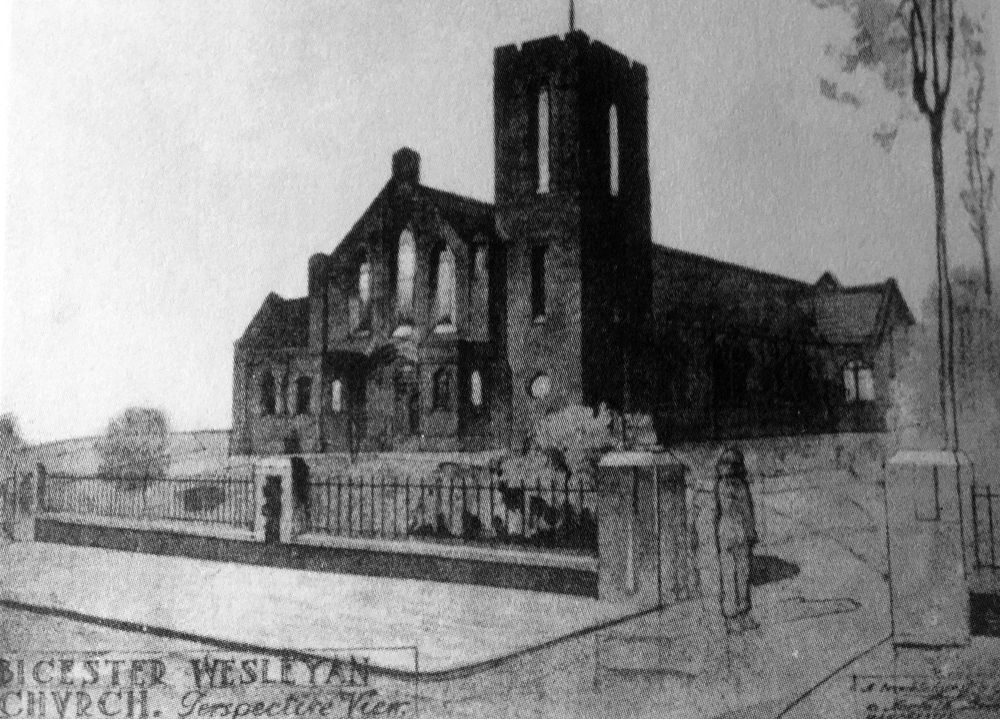Church’s Golden Jubilee
1977 saw the Golden Jubilee of Bicester Methodist Church, celebrated with a weekend of events in June of that year, including a floral display and a supper in the Methodist Hall on the Saturday, and two special services on the Sunday.
It wasn’t the 50th anniversary of the start of Methodism in Bicester (which dates back to 1814), but rather the 50 years since the present day church building was opened. The half-century of the building’s existence had seen a steady progress in the life of the church, which found unexpected fame through its Red Rhythmics Harmonica Band.
Methodism began in the town after a Mrs J. Bowerman was “awakened” while listening to the preachings of the Rev. John Wesley at Brackley. When she and her husband settled in Bicester they at first attended St Edburg’s parish church, but soon arranged for the Brackley minister to visit the town. A room in a farmhouse standing on the site where the former Wesley Hall would later be built (now Home Comforts) was opened by Mr Bowerman for these services.
Over the following years two separate branches of Wesleyanism developed in the town. One stayed on the site of the farmhouse and eventually built Wesley Hall.
The other bought a site in North Street and built a chapel there in 1840. Some 40 years later a schoolroom was added. In 1892 the chapel was enlarged, re-seated and the gallery added at a cost of £438. In 1904 an organ was installed costing £270.
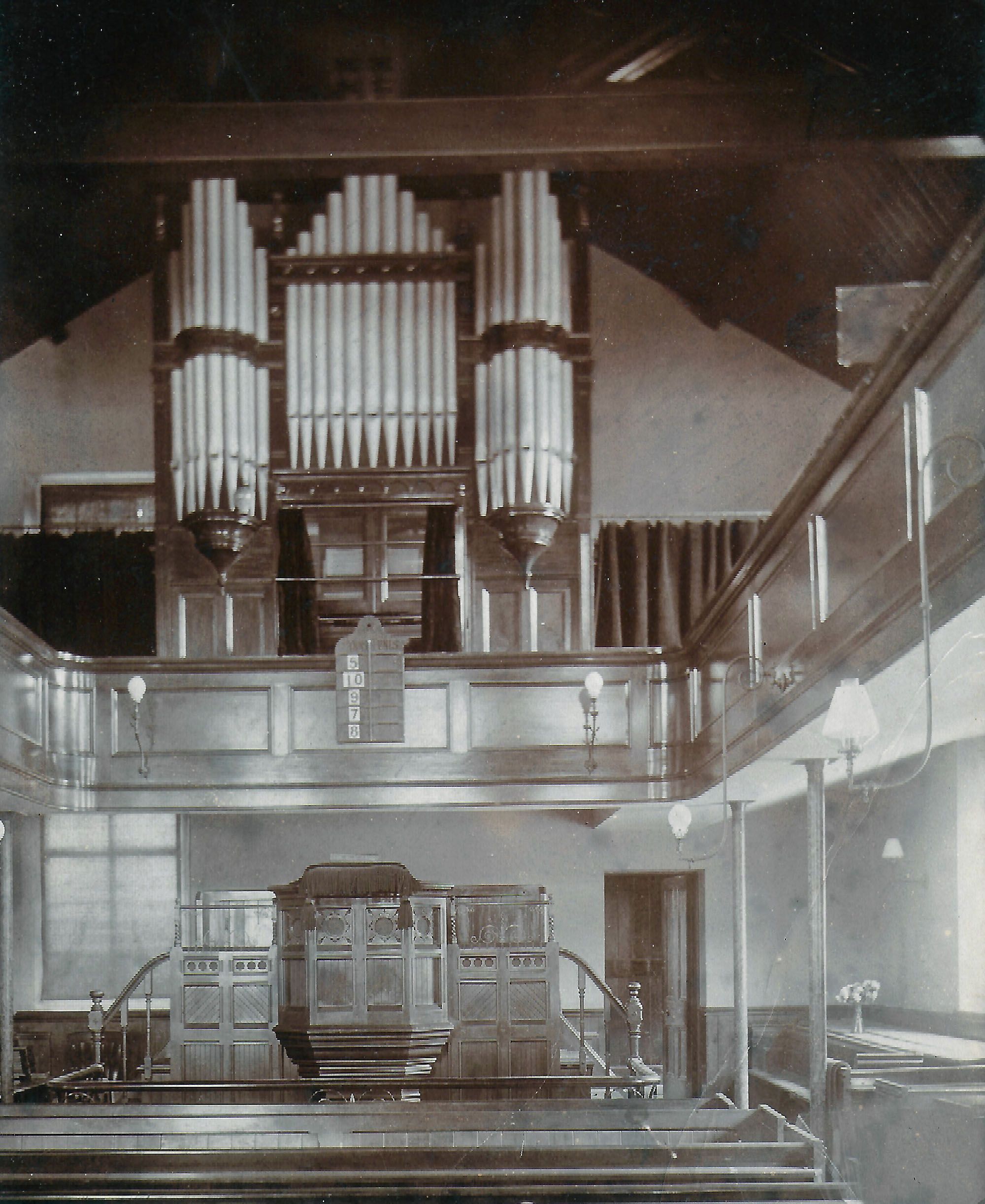
The two separate churches eventually outgrew their buildings and came together to build one common place of worship, the church we have today. Although it was not until 1927 that the Sheep Street church was opened, much of the site was bought in 1919.
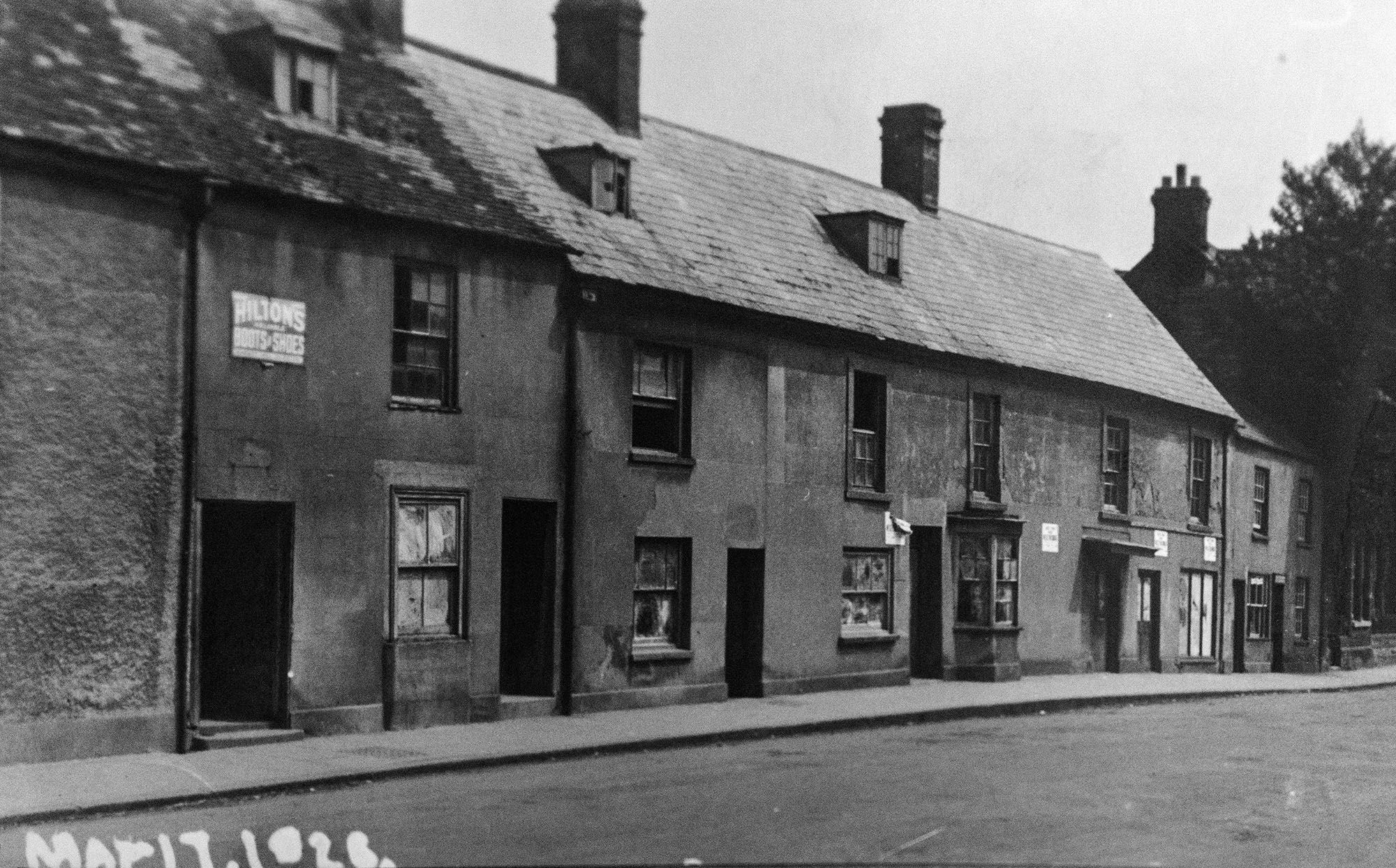
The old chapel in North Street needed extension and remodelling. It seated 300 and had limited vestry accommodation. The church members had to ask themselves if it was worth spending money on the building. And so, in 1925 the old chapel was sold. It was bought by the Jersey Lodge of Masons and became the Masonic Weyland Hall. That provided the the extra cash needed to start construction of the new church.
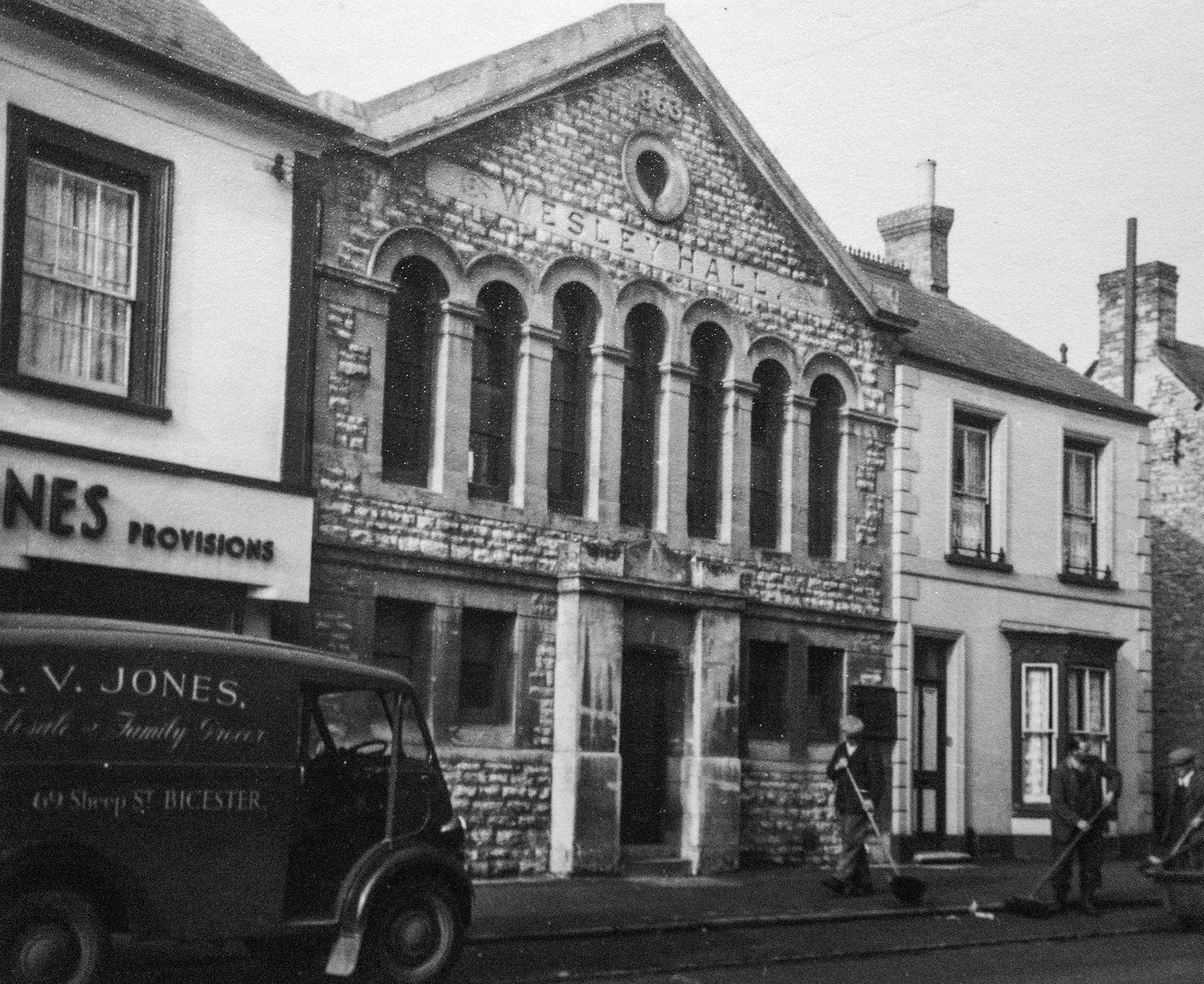
The Wesley Hall in Sheep Street continued to be used as a church until the new one was built, after that it was used as a church hall and for the Sunday School until a new hall was built behind the new church. Wesley Hall was then sold in 1955 to Woolworths. It later became Coxeters furniture store and is now Home Comforts.
The new church was to become the Grainger Hargreaves Memorial Church in memory of a former, noted minister. The Rev Grainger Hargreaves had been a missionary in China, a minister in Australia and New Zealand and eventually chairman of Oxford Methodist District for 18 years. He had returned to Bicester in 1921 and died in 1923.
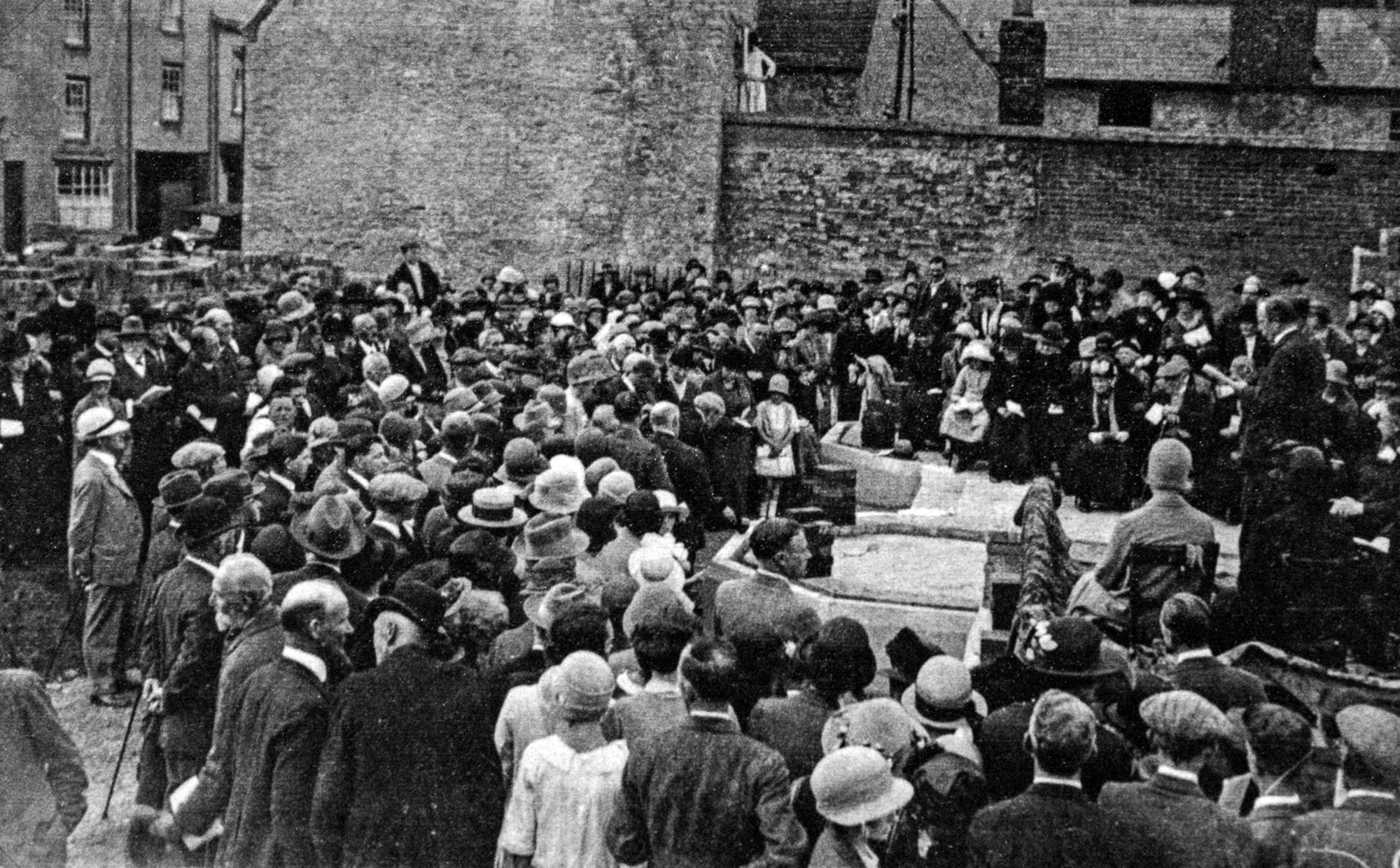
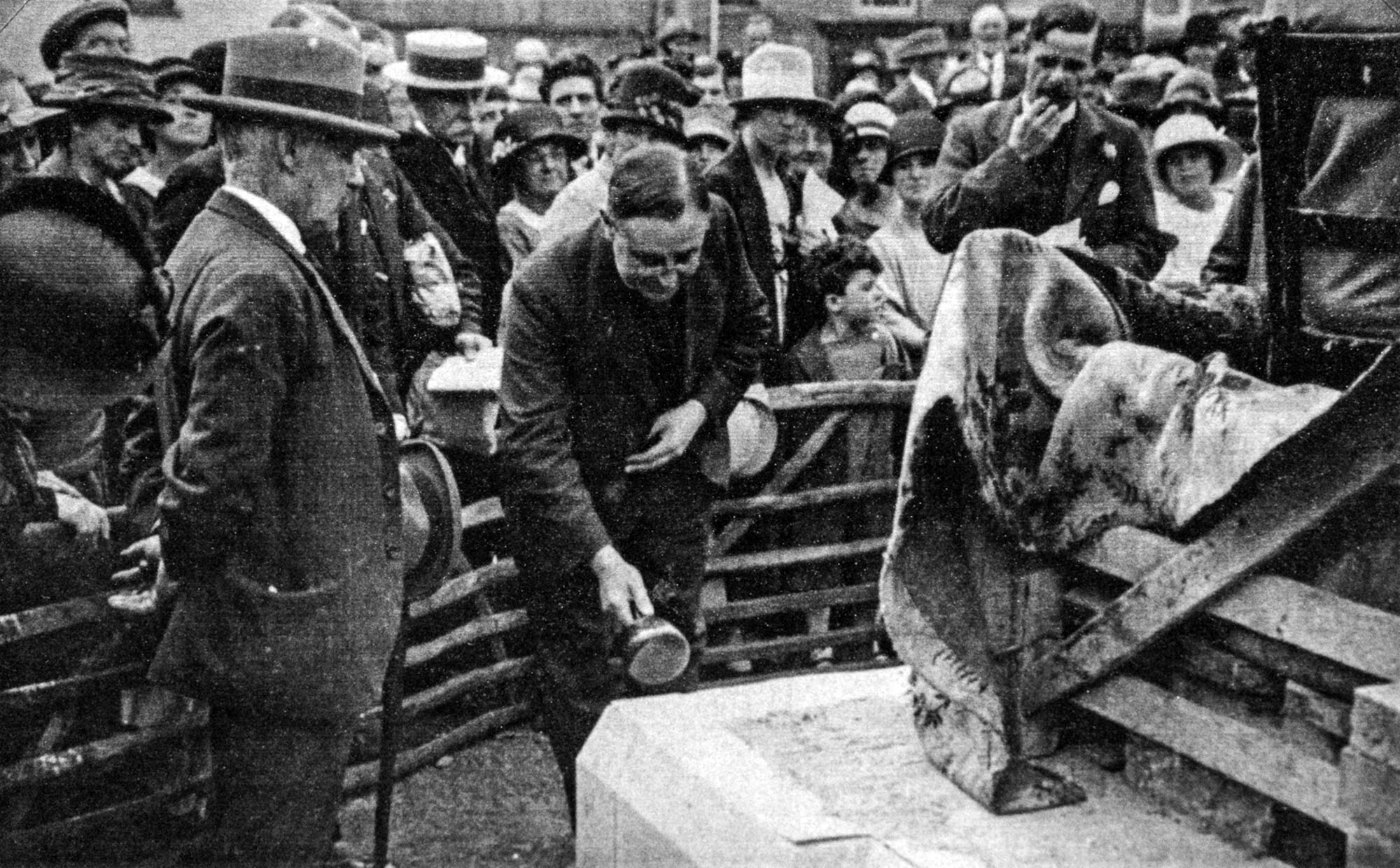
The new church cost £7,000, including the purchase of the site. When the stone-laying ceremony was held on 23rd September 1926, the first stone to be laid was in memory of the Rev Grainger Hargreaves.
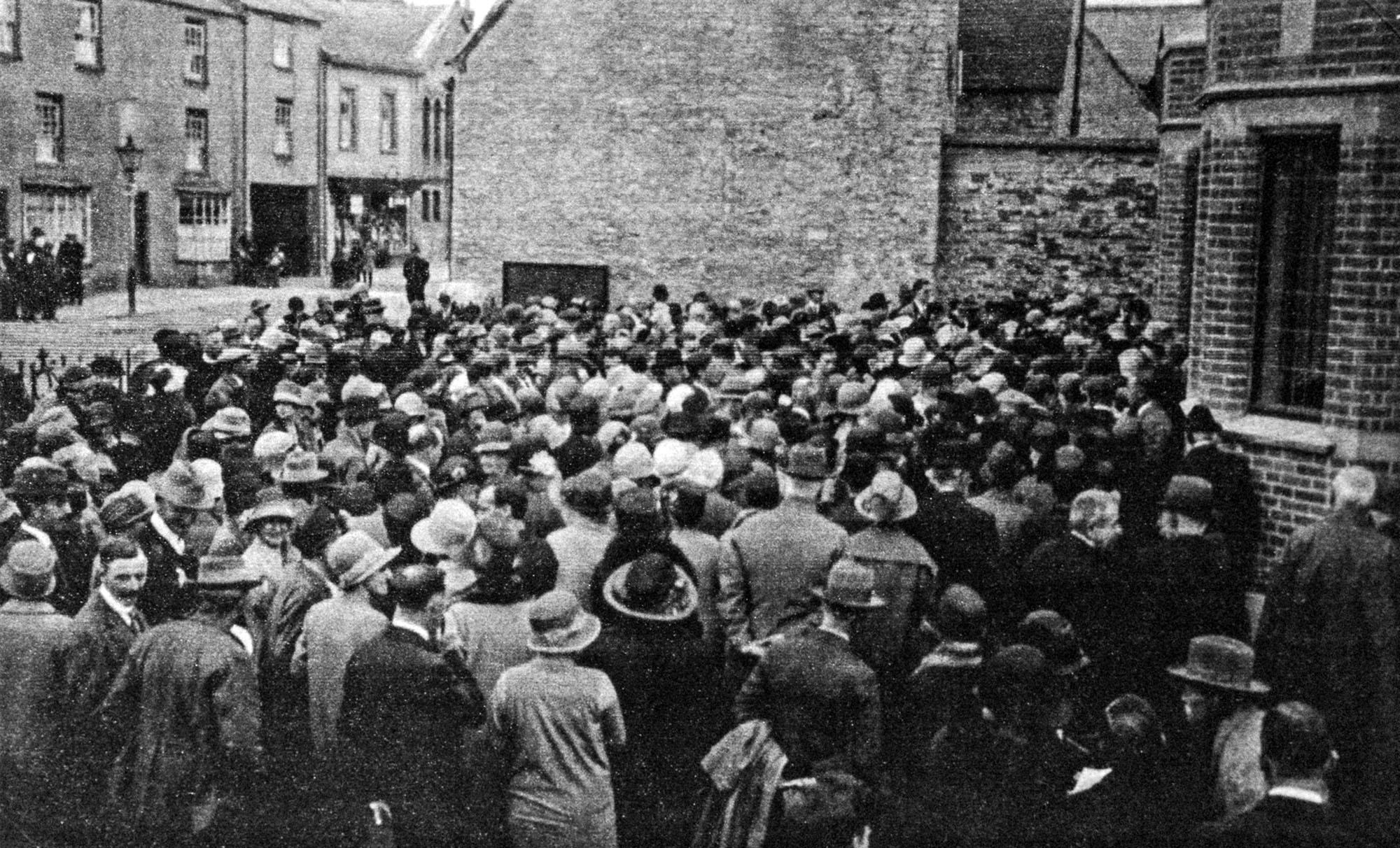
On 23rd June 1927 the new church was opened by Mrs J. Vanner Early, of Witney. The Bicester Advertiser of Friday 1st July records:
“It was a memorable day in local Wesleyan history, and the Bicester adherents and a host of friends signalised the occasion by attending in great number, so much so that the ample seating capacity of the new building was strained to the uttermost to find room for the large audience. At one time it was thought necessary to hold an overflow meeting in the open air, till extra seats had been placed at the east end of the church. The occasion was favoured by brilliant sunshine...”
Builders were Messrs Cannon, Green and Co. of Aylesbury. The Cruciform shape of the building included nave, chancel, transepts, gallery, vestibule, cloakrooms and vestries. The Advertiser recorded:
“…. an organ chamber has been provided for the installation of an organ at a later date. An electric lighting system has been fitted in anticipation of the establishment of the town supply which is promised for next December.”
But at one time it was envisaged by some that the church should be much grander and should have a tower. This idea was abandoned, partly on the grounds of cost.
The church is described as a Modern Gothic style and included Oregon-Columbian pine boarding in the roof and pews.
In 1942 a two-manual organ by Albert Keates of Sheffield was installed as a gift from Mr George Layton, one of the Bicester church’s main benefactors. The organ was believed to come from a bombed church. Mr Layton was organist for 50 years and he had opened the first garage in London Road in Bicester in 1910, having, it was popularly thought, foreseen that narrow North Street would not be useful for cars.
The Red Rhythmics Harmonica Band had been founded by Mr Sid G. Hedges, (S.G. as he was known) the late local author and historian, best known for his chronicle “Bicester Wuz a Little Town.” He was Sunday School superintendent for 50 years, following on from his father, Mr George Hedges. Sid founded the band in the thirties and it ran until 1948.
A long standing member was Mr Joe Leach, of Field Street, a Bicester councillor at the time of the anniversary. “I should think there were 15 to 20 of us. I was the percussionist or drummer. We wore red berets, white shirts and grey flannels. Sid was the founder and conductor and sometimes he appeared before our audiences in evening suit,” he remembered.
The band played most music for their concerts at towns in the region and at major halls in London, including the Royal Albert Hall. “We gave concerts but did not play for dances.”
The band appeared several times on radio, usually from the BBC studios in Birmingham, and also on television. Their fame led to the former Picture Post magazine featuring an article on the church Sunday School under the headline “Sunday School is Different Here.”
The band folded in the early 1950’s partly because of difficulties in obtaining new harmonicas.
